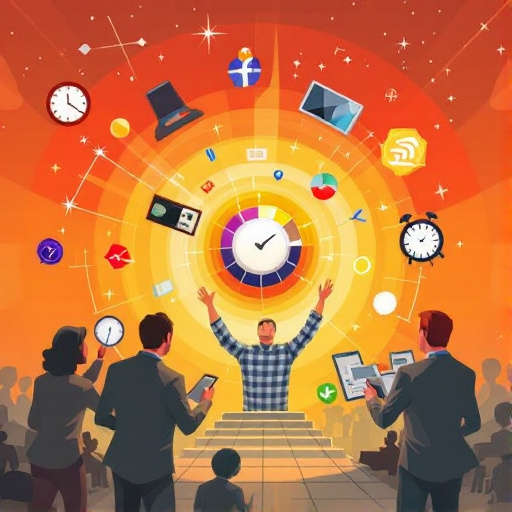Featured Articles
- 7 Game-Changing AI Recruitment Platforms Released Since 2019 That Are Redefining Hiring Efficiency
- Harnessing the Power of Micro-Experiences: A New Frontier in Employee Engagement and Retention Strategies
- Navigating the Quirks of Remote Teams: Unconventional HR Tips for Boosting Virtual Morale
- Top 6 Workforce Analytics Platforms Launched Since 2019: In-Depth Reviews and ROI Rankings for HR Leaders
- Top 8 Talent Management Tools Launched Since 2019: A Comprehensive Comparison and Buyer’s Guide
Top 6 Workforce Analytics Platforms Launched Since 2019: In-Depth Reviews and ROI Rankings for HR Leaders
Top 6 Workforce Analytics Platforms Launched Since 2019: In-Depth Reviews and ROI Rankings for HR Leaders
Top 6 Workforce Analytics Platforms Launched Since 2019: In-Depth Reviews and ROI Rankings for HR Leaders
Introduction to Workforce Analytics Platforms
In the rapidly evolving landscape of human resources, workforce analytics platforms have become indispensable tools for driving data-driven decision-making. Since 2019, a wave of new platforms has emerged, each designed to help HR leaders optimize talent management, improve employee engagement, and predict workforce trends. These solutions leverage advanced analytics, machine learning, and seamless integrations to provide actionable insights.
Understanding the return on investment (ROI) and practical benefits of these tools is critical for HR leaders aiming to justify expenditures and select platforms that align with organizational goals. This article examines the top six workforce analytics platforms launched since 2019, offering detailed reviews and ROI rankings to assist decision-makers in choosing the best fit.
Our selection criteria include innovation, usability, data integration capabilities, predictive analytics strength, and customer feedback. By exploring features and performance metrics, HR professionals will gain a clearer perspective on which workforce analytics solutions deliver both operational excellence and financial value.
1. Visier People (Updated 2019 Version)
Visier People has been a market leader, but its 2019 update introduced enhanced predictive analytics and a more intuitive user interface. It excels in workforce planning, turnover prediction, and diversity analytics, helping organizations identify retention risks before they escalate. The platform supports deep data integration from various HRIS systems, providing a holistic view of workforce metrics.
HR leaders report that Visier People’s advanced modeling capabilities reduce turnover by up to 20%, which according to a 2021 Deloitte report, can translate into substantial cost savings linked to recruitment and training. Its cloud-based architecture ensures scalability for enterprises of all sizes, with strong security compliance features.
ROI rankings position Visier consistently in the top tier due to its impact on reducing attrition and improving workforce productivity. However, some users cite a steeper learning curve initially, making committed training essential for maximizing platform benefits.
2. ChartHop
Launched in its full analytics capacity around 2020, ChartHop combines organizational charting with workforce analytics to provide unique visual perspectives on employee data. Its platform enables HR teams to conduct scenario planning and compensation benchmarking seamlessly, fostering enhanced transparency and data-driven decision-making.
In practice, companies utilizing ChartHop have noted improved workforce agility, particularly during periods of rapid change or restructuring. The platform’s user-friendly interface and flexible reporting tools encourage widespread adoption beyond the HR department, involving managers and executives for holistic insights.
ROI assessments highlight ChartHop’s ability to reduce redundant roles and optimize team structures, generating reported savings of 10-15% in labor costs annually, enhancing organizational efficiency and workforce satisfaction.
3. Lattice Analytics Suite (Launched 2019)
Lattice expanded its performance management solution in 2019 to include a powerful analytics suite that helps companies correlate engagement, performance data, and business outcomes. It provides granular insights into employee morale trends and the impact of managerial effectiveness on productivity.
The platform’s strength lies in its integration of survey feedback with operational data, enabling HR teams to enact targeted interventions. A notable feature is its predictive attrition risk model, which uses machine learning to prioritize intervention efforts and optimize retention strategies.
Lattice analytics typically delivers a strong ROI by improving employee engagement scores by over 10% according to internal case studies, which are closely linked to revenue growth and lower turnover costs. It's an ideal tool for mid-sized firms aiming to refine their talent management processes.
4. Peakon (Workday Acquisition in 2021)
Peakon, acquired by Workday in 2021, has continued to evolve as a leading workforce listening and analytics platform. Since 2019, it has integrated real-time employee feedback with sophisticated analytics to identify drivers of engagement and productivity clearly.
This continuous listening capability allows HR leaders to respond promptly to emerging workforce issues and improve overall organizational health. The platform’s AI-driven insights categorize feedback by themes, enabling proactive management of employee sentiment at scale.
The ROI of Peakon is often observed in improved employee retention rates and higher productivity metrics, supported by Workday’s robust integration ecosystem. Reports indicate organizations achieve up to 25% improvements in engagement scores within the first year of deployment.
5. Humanyze Organizational Analytics
Established initially as a people analytics innovator, Humanyze’s updates since 2019 have focused on behavioral data analytics using communication metadata. It offers unique insights into collaboration patterns, employee well-being, and workflow efficiency, distinguishing itself from traditional metrics.
This platform uses anonymized data from emails, calendars, and badge swipes to reveal network dynamics and hidden bottlenecks. HR leaders can leverage these insights to design interventions supporting more effective teamwork and reduce burnout risks.
Humanyze is rated highly for ROI in organizations prioritizing well-being and innovation culture. By enhancing collaboration and identifying at-risk groups early, companies report reductions in absenteeism and improved innovation output, translating into clear financial benefits.
6. Visier People Science
Visier launched People Science in 2020 as an extension to its workforce analytics ecosystem, focusing specifically on bespoke predictive modeling using advanced AI techniques. It emphasizes custom solutions tailored to sector-specific challenges such as healthcare or finance.
People Science supports exploratory analysis by data scientists and HR analysts, providing advanced algorithms that predict outcomes such as skill shortages and succession risks. This capability helps organizations plan workforce transformations proactively rather than reactively.
The platform’s ROI is measured by its ability to reduce talent gaps and align workforce capabilities with strategic priorities. Early adopters report improved agility during market disruptions, with cost avoidance in recruiting and training reaching upwards of 30% annually.
Conclusion: Choosing the Right Workforce Analytics Platform
The landscape of workforce analytics platforms launched since 2019 offers HR leaders powerful options tailored to diverse organizational needs. From Visier’s comprehensive predictive analytics to ChartHop’s organizational visualization and Peakon’s real-time listening capabilities, these platforms drive enhanced decision-making and workforce outcomes.
Investing in the right solution requires consideration of specific business challenges, data maturity, and desired outcomes. ROI is closely linked to platform adoption rates, quality of data inputs, and integration with existing HR ecosystems. Training and executive support remain crucial to extracting full value.
Ultimately, the selected workforce analytics tool should empower HR leaders with timely, actionable insights to foster a more engaged, productive, and resilient workforce—critical drivers of sustainable organizational success in today’s dynamic environment.
References
• Deloitte. (2021). Global Human Capital Trends 2021. Retrieved from https://www2.deloitte.com/
• Visier. (2020). Impact of Workforce Analytics on Reducing Employee Turnover.
• Workday. (2022). Peakon Employee Engagement Report. Retrieved from https://www.workday.com/
• Lattice. (2019). Customer Case Studies on Employee Engagement.




